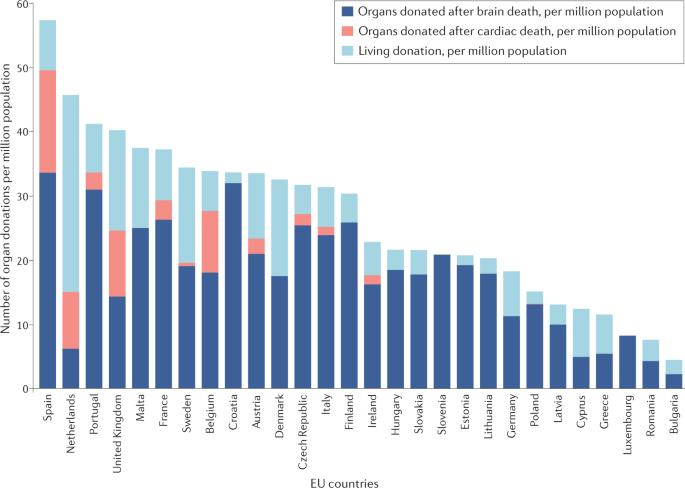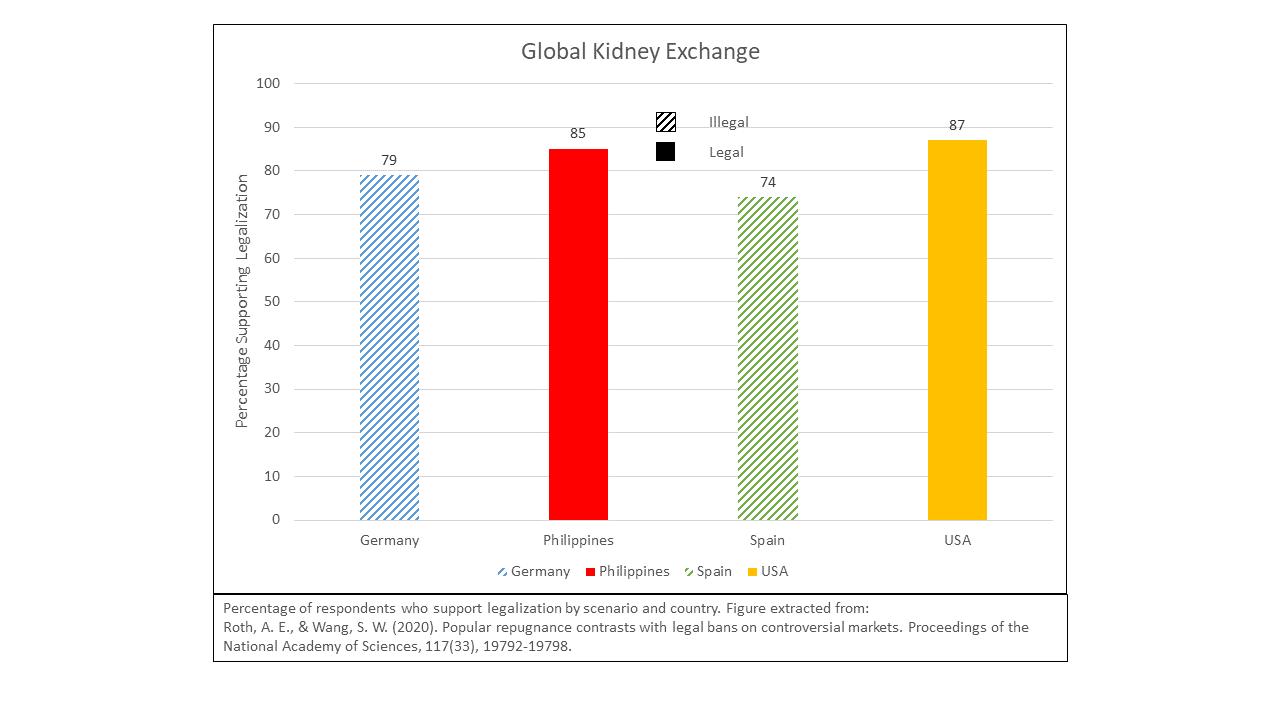I recently had occasion to review the long collaboration between my Stanford colleagues and Mike Rees and the Alliance for Paired Kidney Donation. It turns out that, together with other coauthors, Mike and his APKD colleagues have written well over a dozen papers with me and my colleagues at Stanford. (My own collaboration with Mike and APKD goes back to when Itai Ashlagi and I were still in Boston, where my earliest papers on kidney exchange were with Tayfun Sönmez and Utku Ünver, and with Frank Delmonico and his colleagues at the New England Program for Kidney Exchange.)
Here's the list I came up with, probably not exhaustive:
Mike Rees/APKD collaborations with Stanford scholars (Ashlagi, Melcher, Roth, Somaini)
1. Rees, Michael A., Jonathan E. Kopke, Ronald P.
Pelletier, Dorry L. Segev, Matthew E. Rutter, Alfredo J. Fabrega, Jeffrey
Rogers, Oleh G. Pankewycz, Janet Hiller, Alvin E. Roth, Tuomas Sandholm,
Utku Ünver, and Robert A. Montgomery, “A Non-Simultaneous Extended
Altruistic Donor Chain,” New England
Journal of Medicine, 360;11, March 12, 2009, 1096-1101. https://www.nejm.org/doi/full/10.1056/NEJMoa0803645
2. Ashlagi, Itai, Duncan S.
Gilchrist, Alvin E. Roth, and Michael A. Rees, “Nonsimultaneous Chains and
Dominos in Kidney Paired Donation – Revisited,” American Journal of Transplantation, 11, 5, May 2011, 984-994 http://www.stanford.edu/~alroth/papers/Nonsimultaneous%20Chains%20AJT%202011.pdf
3.
Ashlagi, Itai, Duncan S. Gilchrist, Alvin E. Roth, and Michael A. Rees,
“NEAD Chains in Transplantation,” American
Journal of Transplantation, December 2011; 11: 2780–2781. http://web.stanford.edu/~iashlagi/papers/NeadChains2.pdf
4.
Wallis, C. Bradley, Kannan P. Samy, Alvin E. Roth,
and Michael A. Rees, “Kidney Paired Donation,” Nephrology Dialysis Transplantation, July 2011, 26 (7): 2091-2099 (published online March 31, 2011; doi: 10.1093/ndt/gfr155, https://academic.oup.com/ndt/article/26/7/2091/1896342/Kidney-paired-donation
5. Rees, Michael A.,
Mark A. Schnitzler, Edward Zavala, James A. Cutler, Alvin E. Roth, F. Dennis Irwin, Stephen W.
Crawford,and Alan B. Leichtman, “Call to
Develop a Standard Acquisition Charge Model for Kidney Paired Donation,” American Journal of Transplantation,
2012, 12, 6 (June), 1392-1397. (published online 9 April 2012 http://onlinelibrary.wiley.com/doi/10.1111/j.1600-6143.2012.04034.x/abstract )
6. Anderson, Ross, Itai Ashlagi,
David Gamarnik, Michael Rees, Alvin E. Roth, Tayfun Sönmez and M. Utku Ünver,
" Kidney
Exchange and the Alliance for Paired Donation: Operations Research Changes the
Way Kidneys are Transplanted," Edelman Award Competition, Interfaces, 2015, 45(1), pp. 26–42. http://pubsonline.informs.org/doi/pdf/10.1287/inte.2014.0766
7. Fumo, D.E., V. Kapoor, L.J. Reece,
S.M. Stepkowski,J.E. Kopke, S.E. Rees, C. Smith, A.E. Roth, A.B. Leichtman,
M.A. Rees, “Improving matching strategies in kidney paired donation: the 7-year
evolution of a web based virtual matching system,” American Journal of Transplantation, October 2015, 15(10), 2646-2654
http://onlinelibrary.wiley.com/enhanced/doi/10.1111/ajt.13337/ (designated one of 10 “best of AJT
2015”)
8. Melcher, Marc L., John P. Roberts,
Alan B. Leichtman, Alvin E. Roth, and Michael A. Rees, “Utilization of Deceased
Donor Kidneys to Initiate Living Donor Chains,” American Journal of Transplantation, 16, 5, May 2016, 1367–1370. http://onlinelibrary.wiley.com/doi/10.1111/ajt.13740/full
9.
Michael A.
Rees, Ty B. Dunn, Christian S. Kuhr, Christopher L. Marsh, Jeffrey Rogers,
Susan E. Rees, Alejandra Cicero, Laurie J. Reece, Alvin E. Roth, Obi Ekwenna,
David E. Fumo, Kimberly D. Krawiec, Jonathan E. Kopke, Samay Jain, Miguel Tan
and Siegfredo R. Paloyo, “Kidney Exchange to Overcome Financial Barriers to
Kidney Transplantation,” American Journal of Transplantation, 17, 3, March
2017, 782–790. http://onlinelibrary.wiley.com/doi/10.1111/ajt.14106/full
a. M. A. Rees, S. R. Paloyo, A. E.
Roth, K. D. Krawiec, O. Ekwenna, C. L. Marsh, A. J. Wenig, T. B. Dunn, “Global Kidney Exchange:
Financially Incompatible Pairs Are Not Transplantable Compatible Pairs,” American Journal of Transplantation, 17,
10, October 2017, 2743–2744. http://onlinelibrary.wiley.com/doi/10.1111/ajt.14451/full
b.
A. E. Roth,
K. D. Krawiec, S. Paloyo, O. Ekwenna, C. L. Marsh, A. J. Wenig, T. B. Dunn, and
M. A. Rees, “People should not be banned from transplantation only because of
their country of origin,” American
Journal of Transplantation, 17, 10, October 2017, 2747-2748. http://onlinelibrary.wiley.com/doi/10.1111/ajt.14485/full
c. Ignazio R. Marino, Alvin E. Roth,
Michael A. Rees; Cataldo Doria, “Open dialogue between professionals with
different opinions builds the best policy, American
Journal of Transplantation, 17, 10, October 2017, 2749. http://onlinelibrary.wiley.com/doi/10.1111/ajt.14484/full
10. Danielle Bozek, Ty B. Dunn,
Christian S. Kuhr, Christopher L. Marsh, Jeffrey Rogers, Susan E. Rees, Laura
Basagoitia, Robert J. Brunner, Alvin E. Roth, Obi Ekwenna, David E. Fumo,
Kimberly D. Krawiec, Jonathan E. Kopke, Puneet Sindhwani, Jorge Ortiz, Miguel
Tan, and Siegfredo R. Paloyo, Michael A. Rees, “The Complete Chain of the First
Global Kidney Exchange Transplant and 3-yr Follow-up,” European Urology Focus, 4, 2, March 2018, 190-197. https://www.sciencedirect.com/science/article/pii/S2405456918301871
11. Itai Ashlagi, Adam Bingaman,
Maximilien Burq, Vahideh Manshadi, David Gamarnik, Cathi Murphey, Alvin E.
Roth, Marc L. Melcher, Michael A. Rees,
”The effect of match-run frequencies on the number of transplants and waiting
times in kidney exchange,” American
Journal of Transplantation, 18, 5, May 2018, 1177-1186, https://onlinelibrary.wiley.com/doi/full/10.1111/ajt.14566
12. Stepkowski, S. M., Mierzejewska,
B., Fumo, D., Bekbolsynov, D., Khuder, S., Baum, C. E., Brunner, R. J., Kopke,
J. E., Rees, S. E., Smith, C. E., Ashlagi, I., Roth, A. E., Rees, M. A., “The
6-year clinical outcomes for patients registered in a multiregional United
States Kidney Paired Donation program- a retrospective study,” Transplant international 32: 839-853.
2019. https://onlinelibrary.wiley.com/doi/10.1111/tri.13423
13.
Roth, Alvin
E., Ignazio R. Marino, Obi Ekwenna, Ty B. Dunn, Siegfredo R. Paloyo, Miguel
Tan, Ricardo Correa-Rotter, Christian S. Kuhr, Christopher L. Marsh, Jorge
Ortiz, Giuliano Testa, Puneet Sindhwani, Dorry L. Segev, Jeffrey Rogers,
Jeffrey D. Punch, Rachel C. Forbes, Michael A. Zimmerman, Matthew J. Ellis,
Aparna Rege, Laura Basagoitia, Kimberly D. Krawiec, and Michael A. Rees, “Global Kidney Exchange Should Expand Wisely, Transplant International,
September 2020, 33, 9, 985-988. https://onlinelibrary.wiley.com/doi/full/10.1111/tri.13656
14. Vivek B. Kute, Himanshu V. Patel,
Pranjal R. Modi, Sayyad J. Rizvi, Pankaj R. Shah, Divyesh P Engineer, Subho
Banerjee, Hari Shankar Meshram, Bina P. Butala, Manisha P. Modi, Shruti Gandhi,
Ansy H. Patel, Vineet V. Mishra, Alvin E. Roth, Jonathan E. Kopke, Michael A.
Rees, “Non-simultaneous
kidney exchange cycles in resource-restricted countries without non-directed
donation,” Transplant International, Volume 34, Issue 4, April 2021, 669-680
https://doi.org/10.1111/tri.13833
15. Afshin
Nikzad, Mohammad Akbarpour, Michael A. Rees, and Alvin E. Roth “Global Kidney
Chains,” Proceedings of the National Academy of Sciences, September 7,
2021 118 (36) e2106652118; https://doi.org/10.1073/pnas.2106652118 .
16.
Alvin E. Roth, Ignazio R. Marino, Kimberly D.
Krawiec, and Michael A. Rees, “Criminal, Legal, and Ethical
Kidney Donation and Transplantation: A Conceptual Framework to Enable
Innovation,” Transplant International
(2022), 35: doi: 10.3389/ti.2022.10551, https://www.frontierspartnerships.org/articles/10.3389/ti.2022.10551/full
17. Ignazio R. Marino, Alvin E. Roth, and Michael
A. Rees, “Living Kidney Donor Transplantation and Global Kidney Exchange,” Experimental
and Clinical Transplantation (2022),
Suppl. 4, 5-9. http://www.ectrx.org/class/pdfPreview.php?year=2022&volume=20&issue=8&supplement=4&spage_number=5&makale_no=0
18. Agarwal, Nikhil, Itai Ashlagi, Michael A. Rees, Paulo
Somaini, and Daniel Waldinger. "Equilibrium allocations under alternative
waitlist designs: Evidence from deceased donor kidneys." Econometrica 89,
no. 1 (2021): 37-76.
And here’s a report of work in progress:
The First 52 Global Kidney
Exchange Transplants: overcoming multiple barriers to transplantation by
MA Rees, AE Roth , IR Marino, K Krawiec, A Agnihotri, S Rees, K Sweeney, S
Paloyo, T Dunn, M Zimmerman, J Punch, R Sung, J Leventhal, A Alobaidli, F Aziz,
E Mor, T Ashkenazi, I Ashlagi, M Ellis, A Rege, V Whittaker, R Forbes, C Marsh,
C Kuhr, J Rogers, M Tan, L Basagoitia, R Correa-Rotter, S Anwar, F Citterio, J
Romagnoli, and O Ekwenna. Transplantation: September 2022 - Volume 106 - Issue 9S - p
S469 doi: 10.1097/01.tp.0000887972.53388.77 https://journals.lww.com/transplantjournal/Fulltext/2022/09001/423_9__The_First_52_Global_Kidney_Exchange.697.aspx





